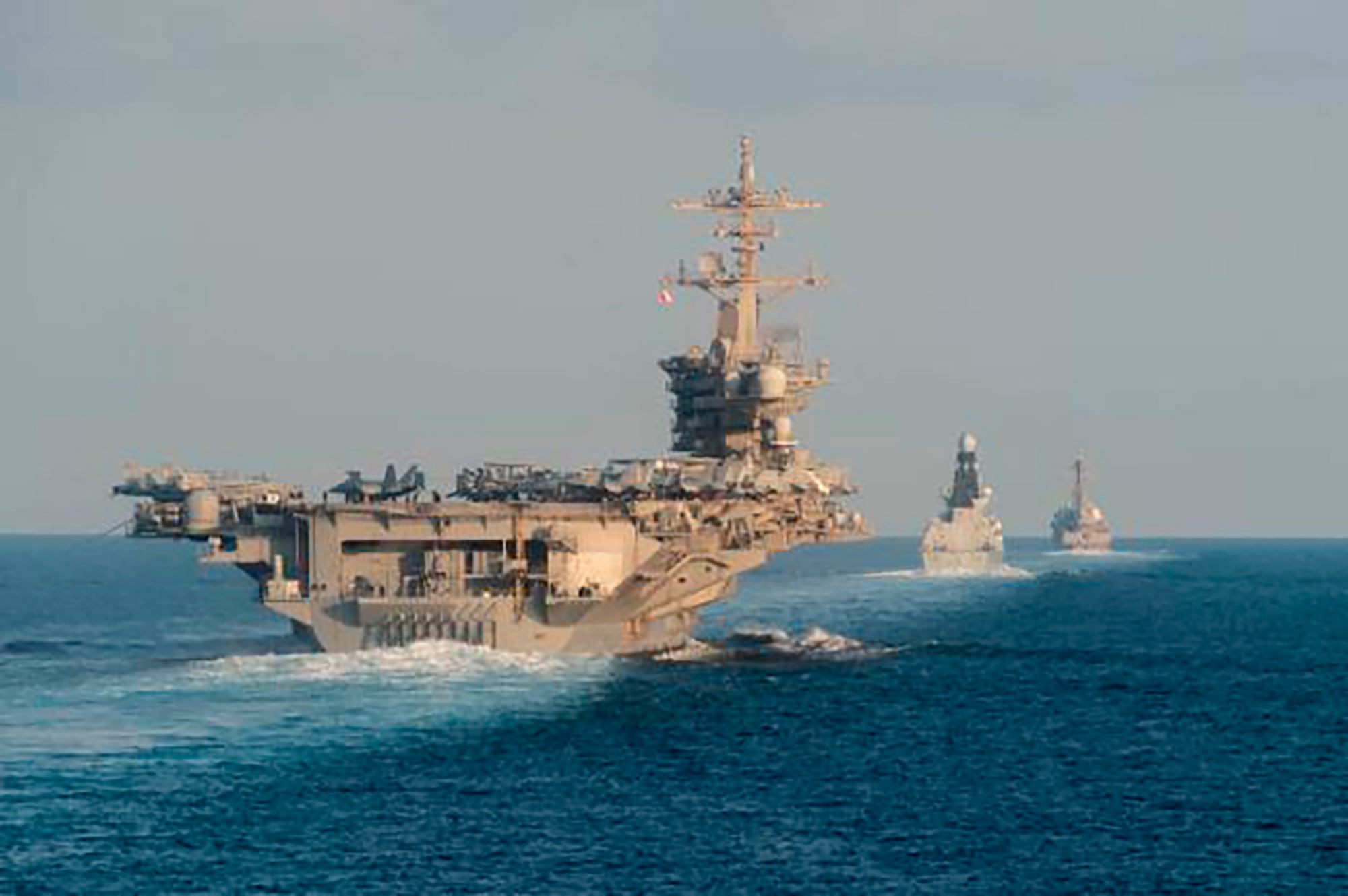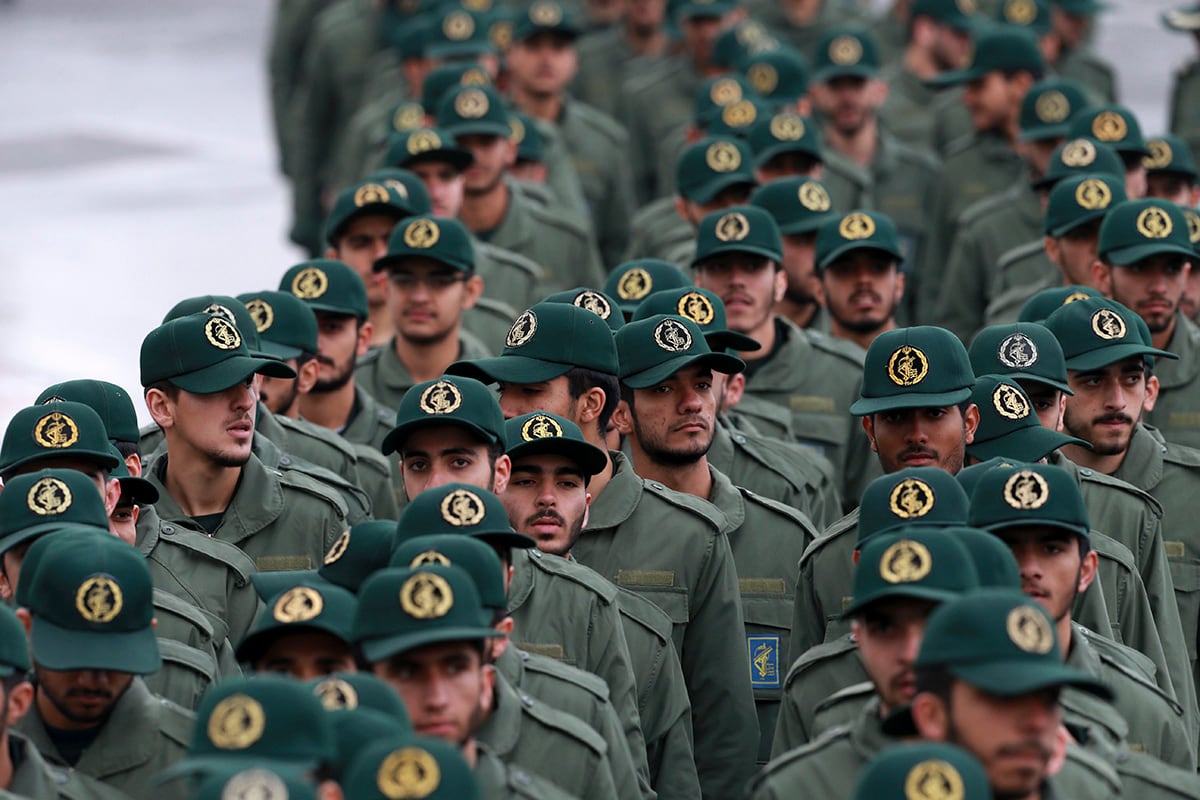The Iraqi military said four rockets struck near a military camp next to Baghdad International Airport on Monday — making it the ninth attack near U.S. installations and interests in the last several weeks.
Iraqi authorities said six of their troops were wounded in the attack and that security forces found a missile launcher with missiles that failed to launch.
Military Times reached out to Operation Inherent Resolve — the U.S.-led mission to defeat ISIS in Iraq and Syria — regarding the status of U.S. forces near Iraqi airport and have yet to receive a response.
RELATED

But a U.S. official told Military Times prior to Monday’s strike near the Baghdad airport that there have been eight rocket attacks near installations housing U.S. troops over the last five weeks.
No U.S. troops have been injured in any of the recent attacks and no facilities have received significant damage, the official said.
Iran is believed to be behind several of the attacks, including the Dec. 3 attack that rocked the sprawling al-Asad, Iraq, airbase, the official said.
The attack on al-Asad was notable, the official said, in that the attackers used a 122 mm rocket, which is deadlier and boasts a longer range than the 107 mm rockets that have been used in previous attacks.
The 122 mm rocket attack also requires a more sophisticated improvised rail system to launch the rockets, the official explained.
The Iraqi army responded to the al-Asad attack and found a rocket-rigged truck with seven empty rocket tubes and eight additional unfired rockets, the official detailed.
The attack is under investigation but the U.S. believes Iran-aligned Shia militia group known as Kataib Hezb’Allah was responsible for the attack.
While al-Asad is located in Anbar province — once the heart of the Sunni insurgency at the height of America’s participation in the Iraq conflict — Kataib Hezb’Allah has an extensive network across the volatile province, according to Phillip Smyth, a research fellow for the Washington Institute and Iran expert.
RELATED

The Shia militant group has been known to operate in al-Qaim, Abu Kamal and along route 1 that runs through Anbar province, Smyth told Military Times.
The attack appears to be “clear messaging from the Iranians,” he said. But the message Iran is sending is sometimes difficult to read.
Iran may be seeking to cause a distraction to “draw” Americans in following violent protests that have recently rocked Lebanon, Iraq and Iran, Smyth said. It may also be in response to disucssions over U.S. troop increases to the Middle East.
The U.S. has deployed 14,000 American troops to the U.S. Central Command area of responsibility over the last six months following attacks on commercial tankers over the summer and a strike on two Saudi Arabian oil facilities in September. The U.S. has blamed Iran for those attacks.
Secretary of Defense Mark Esper has said the Pentagon is considering its force posture in the Middle East and may deploy additional forces to the region.
Iran ideologically believes the U.S., Israel and Saudi Arabia are behind events that lead to destabilization in Iran, including the recent protest movements that have killed scores of civilians in recent weeks, Smyth said.
Several weeks ago Iran erupted into violent protests over rising gasoline prices that some analysts have compared to the demonstrations that toppled the Shah during the 1979 Iranian Revolution.
Brian Hook, the U.S.'s special representative for Iran, told reporters Dec. 5, that more than 1,000 civilians may have been killed during the Iranian protests.
“We know for certain it is many, many hundreds,” Hook said.
On Dec. 5, five 107 mm rockets landed inside the Iraqi base in Balad. The attack on Balad is under investigation.
Shawn Snow is the senior reporter for Marine Corps Times and a Marine Corps veteran.
Meghann Myers is the Pentagon bureau chief at Military Times. She covers operations, policy, personnel, leadership and other issues affecting service members.




